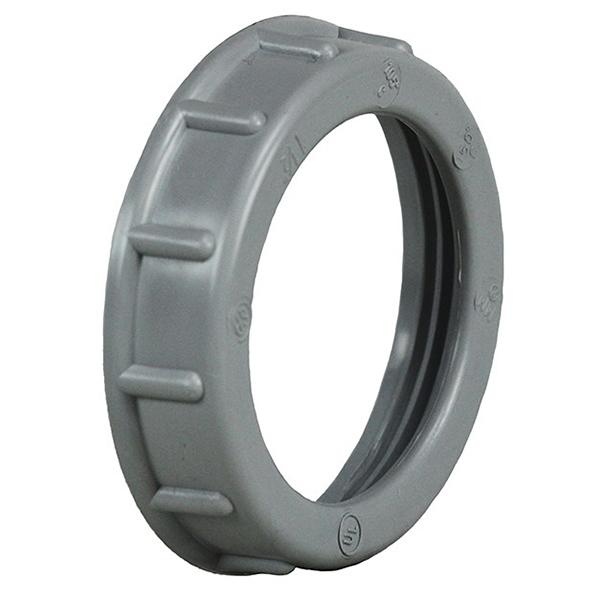mstrlucky74
Senior Member
- Location
- NJ
Because you don't use bushings with EMT connectors.
Don't EMT connectors have bushings as part of the connector?
Because you don't use bushings with EMT connectors.
What protects the wires when pulling thru on non insulated throat.connectors?You can buy them with "insulated throat", but the typical EMT connector does not have an insulating bushing.
View attachment 22154
What protects the wires when pulling thru on non insulated throat.connectors?
Sent from my SM-N960U using Tapatalk
What protects the wires when pulling thru on non insulated throat.connectors?

I've never seen an EMT connector with two locknuts.
They're not designed to have two.
I agree with you from a technically correct position, however, as an estimator I have seen EMT referred to as conduit more often than not. For example, "All wiring shall be in conduit." Then specifying EMT in walls, PVC under slab, etc. or even 3-3/0, #6G in 2" EMT Cond. on a feeder. So, I wouldn't dwell on that technicality.
I agree that specification can be important, but many times they cut and paste those without reviewing exactly what they say and assume it will be what they want, then when installer reads it, occasionally says "what were they thinking".Here you go. From a job I am working. Took me less than 5 minutes.
Outdoors: Apply raceway products as specified below, unless otherwise indicated: 1. Exposed Conduit: Rigid steel conduit or IMC or RNC.
2. Concealed Conduit, Aboveground: Rigid steel conduit, IMC, EMT, RNC,
Type EPC-40-PVC.
3. Underground Conduit: RNC, Type EPC-PVC, direct buried.
4. Connection to Vibrating Equipment (Including Transformers and Hydraulic,
Pneumatic, Electric Solenoid, or Motor-Driven Equipment): LFMC.
5. Boxes and Enclosures, Aboveground: NEMA 250, Type 3R.
not by UL. UL lists it as a raceway.
So is RMC, FMC, ENT, RNMC, HDPE.... All those except the FMC are also tubular products.So according to the language posted, if you choose to use bushings with EMT, you still would not have to use 2 locknuts. As has been demonstrated before in this thread, EMT is not a conduit, it is a tubing.
They seldom have enough thread that two lockuts would work very wellI've never seen an EMT connector with two locknuts.
They're not designed to have two.
The bushing you thread onto the connector.

Post #36 he said no bushing on EMT connectors
So is RMC, FMC, ENT, RNMC, HDPE.... All those except the FMC are also tubular products.
Those section Names are based on product names assigned by NEC.Tubular and tubing are not necessarily the same thing in their meanings, starting at article 342 read all the titles and 3XX.2 sections through article 362 for the specific differences.
Roger
How did you come up with that? The products are what they are and they are listed as such, tubing is tubing and conduit is conduit. We use the general term "conduit" for all of them but the definitions are the correct terms. UL categorizes them as separate items, see UL categories DYIX, FJMX, and FKHU for some examples.Those section Names are based on product names assigned by NEC.
How did you come up with that? The products are what they are and they are listed as such, tubing is tubing and conduit is conduit. We use the general term "conduit" for all of them but the definitions are the correct terms. UL categorizes them as separate items, see UL categories DYIX, FJMX, and FKHU for some examples.
Roger
Typical of specs nowadays. I would love to talk say 100 end users who are also the ones who pay the bill. Educate them on the items the engineer they hired specified that cost additional money and any advantages that actually exist with those items and find out what percentage go ballistic that they spent money on that.
That's what Value Engineering is.....when the owner gets the GC bid and it's out of budget, the GC goes back to his low bidder subs and asks for VE items to save money (a shopping list)
Voluntary Alternates are shopping list savings that I submit on my own. I give a shopping list below the base bid (as specified) price.
I love over-designed bids. I get to come up with all kinds of ways to save money (and pocket money). It's a big shiny object to dangle in front of the owner.
This is also why EE's over-design because they have liability in specifying cheap materials. If the owner wants the savings....the EE is off the hook from liability

